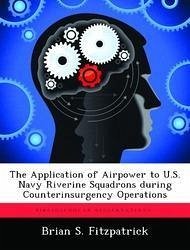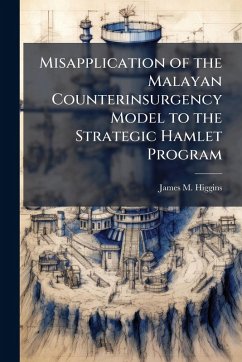
The Application of Airpower to U.S. Navy Riverine Squadrons During Counterinsurgency Operations
Versandkostenfrei!
Versandfertig in über 4 Wochen
15,99 €
inkl. MwSt.

PAYBACK Punkte
8 °P sammeln!
The creation of a Riverine Group by the United States Navy pushes that service out of its comfort zone and into the green and brown water environment. However, these agile and effective forces are only being used in Iraq on the rivers of Mesopotamia. The world's populations historically cluster around sources of water and transportation, which include rivers and coasts. Insurgent forces seeking to overturn national authority need these populations for political ideology and sustainment of forces. The Navy is only now beginning to realize its physical influence in this environment. The Counteri...
The creation of a Riverine Group by the United States Navy pushes that service out of its comfort zone and into the green and brown water environment. However, these agile and effective forces are only being used in Iraq on the rivers of Mesopotamia. The world's populations historically cluster around sources of water and transportation, which include rivers and coasts. Insurgent forces seeking to overturn national authority need these populations for political ideology and sustainment of forces. The Navy is only now beginning to realize its physical influence in this environment. The Counterinsurgency Field Manual codified America's new counterinsurgency (COIN) theory and it identified the population as the Center of Gravity. The Field Manual explains this theory and applies twenty-first century American military strategy techniques to defeating an insurgency. Written in 1940, The Marine Corps Small War Manual detailed riverine operations coupled with air support. The Field Manual does not. The Navy has successfully applied these concepts. From 1965 to 1971, the United States Navy fought for control of the Center of Gravity in the Mekong Delta and the Rung Sat Special Zone with a robust riverine force, which not only blockaded the coast of South Vietnam but also pushed into the interior. Furthermore, the Navy recognized and leveraged airpower in this successful struggle. This work has been selected by scholars as being culturally important, and is part of the knowledge base of civilization as we know it. This work was reproduced from the original artifact, and remains as true to the original work as possible. Therefore, you will see the original copyright references, library stamps (as most of these works have been housed in our most important libraries around the world), and other notations in the work. This work is in the public domain in the United States of America, and possibly other nations. Within the United States, you may freely copy and distribute this work, as no entity (individual or corporate) has a copyright on the body of the work. As a reproduction of a historical artifact, this work may contain missing or blurred pages, poor pictures, errant marks, etc. Scholars believe, and we concur, that this work is important enough to be preserved, reproduced, and made generally available to the public. We appreciate your support of the preservation process, and thank you for being an important part of keeping this knowledge alive and relevant.












